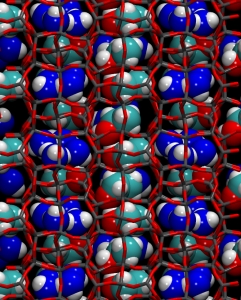To understand how a motor works you have to know how it is put together and how it can be disassembled. This is true at the molecular level as well. Amazingly complex molecular motors and machines are fabricated everyday, but how do they break down into their constituent pieces? Attracted by this question, we modeled two such species – called ‘rotaxanes’ – and made them break apart.
Typically, rotaxanes are made by two molecules: a ring-shaped one, the “wheel”, and an approximately linear one, the “axle”. What is great about them, is that you can modify the interactions between the ring and the axle by using an external signal. Which means that you can control the movements of these components through light, for example.



Using the three components shown above – one ring and two axles – you can build two different rotaxanes: R-EE, and R-ZZ. Both disassemble – or ‘dethread’ – when the axle exits from the ring. This process occurs differently for the two species: While the EE-one (video 1) dethreads in one single step:
the dethreading of the ZZ-axle (video 2) passes through an intermediate and a transition state:
Analyzing the two simulations, we identified the interactions between the molecular components which control the process at the molecular level. For example, we have seen that the elliptic shape of the ring opening is very important, as it can recognize the two different configurations of the terminal groups of the axles. This insight might help in the construction of light-powered molecular devices, of which these rotaxanes are important building blocks.
The results of this work are discussed in our paper (1), which is part of the ChemPhysChem special issue on molecular machines. You may get a nice picture of the field by taking a look at this issue. Its contributions well illustrate the concept that molecular machines -especially natural ones – are incredibly complex and fascinating systems, and we are just beginning to understand their inner workings.
(1)G. Tabacchi, S. Silvi, M. Venturi, A. Credi, E. Fois, ChemPhysChem 2016, 17, 1913 http://dx.doi.org/10.1002/cphc.201501160
A brief summary of the article (with links to additional resources) may be found here.

